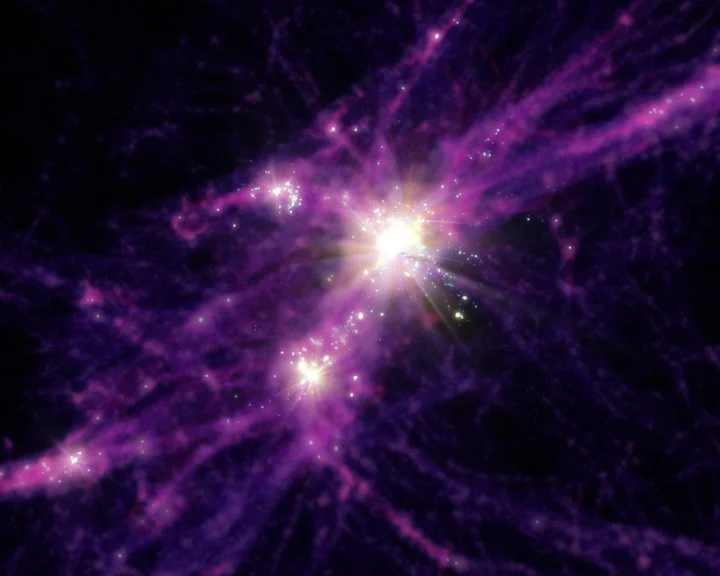Almost immediately after scientists pointed the James Webb Space Telescope at the earliest galaxies in the universe, they were seeing things that didn't jibe with the rules of the cosmos.
These galaxies, viewed as they were only 500 to 700 million years after the Big Bang, seemed too massive and mature for their young age. It was like finding parents and children alongside their grandparents, who were themselves still children, two physicists said in a piece written for The New York Times.
“It’s bananas,” said Erica Nelson, an astrophysicist at the University of Colorado in Boulder, earlier this year in a statement. “You just don’t expect the early universe to be able to organize itself that quickly. These galaxies should not have had time to form.”
But new space research using advanced computer simulations suggests that the reason they appear mature through the infrared eyes of Webb, run by NASA and the European and Canadian space agencies, is not because they are uncharacteristically massive. Though a galaxy's brightness usually corresponds to its mass, small, less-developed galaxies could burn just as bright from irregular bursts of star formation, scientists say.
SEE ALSO: Webb telescope snaps some of its largest images, and they're majesticA group of astrophysicists led by Northwestern University was able to demonstrate this without contradicting existing and widely accepted cosmology theories. The computer experiment was also able to reproduce the same number of bright galaxies at the cosmic dawn that astronomers observed with Webb. The research was published this week in Astrophysical Journal Letters.
"The key is to reproduce a sufficient amount of light in a system within a short amount of time,” said Guochao Sun, lead author on the study, in a statement. "A system doesn’t need to be that massive. If star formation happens in bursts, it will emit flashes of light. That is why we see several very bright galaxies."
The James Webb Space Telescope spotted ancient galaxies initially considered extremely massive for their age because of their brightness. Credit: NASA / ESA / CSA / I. Labbe / G. BrammerWant more science and tech news delivered straight to your inbox? Sign up for Mashable's Light Speed newsletter today.
One of Webb's primary missions is to watch the universe "turn the lights on" for the first time by observing the ancient galaxies from the cosmic dawn — a period between 100 million years to 1 billion years after the Big Bang. In astronomy, looking farther translates into observing the past because light and other forms of radiation take longer to reach us.
Space is filled with gas and dust, which obscures the view to extremely distant and inherently dim light sources, but infrared light waves can penetrate the clouds. A NASA scientist once compared the infrared telescope's sensitivity to being able to detect the heat of a bumblebee on the moon.
The Northwestern simulations revealed that the early galaxies could have undergone something the intellectuals refer to as — we kid you not — "bursty star formation." Rather than making stars at a steady clip like the Milky Way does, for instance, these galaxies churn out stars inconsistently, with a proliferation all at once, followed by stagnant periods sometimes stretching millions of years before another so-called burst.
Bursty star formation is common in low-mass galaxies, said Claude-André Faucher-Giguère, a professor of physics and astronomy at Northwestern, though it's unclear why.
NASA released the first deep field image by the James Webb Space Telescope on July 11, 2022, at the White House. Credit: NASA / ESA / CSA"What we think happens is that a burst of stars form, then a few million years later, those stars explode as supernovae," he said in a statement. "The gas gets kicked out and then falls back in to form new stars, driving the cycle of star formation."
That might not happen in more massive galaxies because they have stronger gravity.
In that case, "When supernovae explode, they are not strong enough to eject gas from the system," Faucher-Giguère continued. "The gravity holds the galaxy together and brings it into a steady state."









